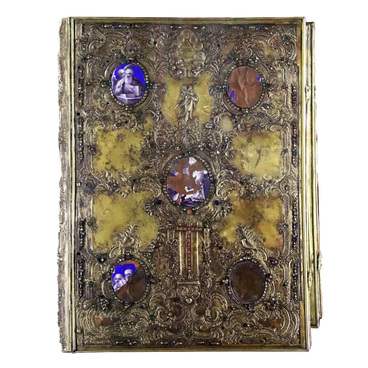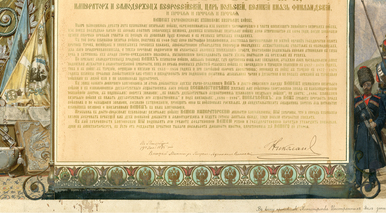A ciborium is an object used in Orthodox worship. It holds the sacramental gifts for the Holy Communion: the consecrated bread and wine, representing the flesh and blood of Jesus Christ. During the worship, the ciborium is placed on the communion table — a square table in the middle of the altar. The Gospel is also kept on the communion table as a symbol of the invisible presence of Christ.
Some ciboria were portable and small. They were made of metal that did not oxidize with time, for example, silver with gilding. Such objects could come in different shapes: they could resemble a church communion table with a communion cup, an Orthodox church, or a chapel.
The ciborium from the collection of the Krasnodar Museum named after Felitsyn used to belong to the Kuban village church of the Second Poltava Regiment of the Kuban Cossack Host. The Cossacks who went to the First World War donated it to the church. At that time, there was a custom: before the military training and campaigns, the regiments donated valuable items to the church or the Kuban village board. Everybody contributed to the cause. Not only ciboria, but also icons in silver revetments, Gospels for communion tables, and chalices could be among these gifts.
The ciborium is made in the form of a five-domed church on four small shaped legs. Its front is decorated with an image of St. Nicholas, who sits on the throne. A halo is engraved around the saint’s head. The right hand of St. Nicholas is raised in the sign of the cross, in his left, he holds the Holy Scripture. In the upper part of the ciborium, there is a colored ornament made of cloisonne enamel, in the corners, there are relief metal pillars with floral paintings.
On the side of the ciborium is the image of a praying barefoot monk. He kneels in the shade of an olive tree, which is considered sacred in the Christian tradition and symbolizes divine love and forgiveness. The monk raises his hands to the sky; a monastic hood covers his head. A chalice, surrounded by the same halo of rays as that of St. Nicholas, is depicted above the monk.
Some ciboria were portable and small. They were made of metal that did not oxidize with time, for example, silver with gilding. Such objects could come in different shapes: they could resemble a church communion table with a communion cup, an Orthodox church, or a chapel.
The ciborium from the collection of the Krasnodar Museum named after Felitsyn used to belong to the Kuban village church of the Second Poltava Regiment of the Kuban Cossack Host. The Cossacks who went to the First World War donated it to the church. At that time, there was a custom: before the military training and campaigns, the regiments donated valuable items to the church or the Kuban village board. Everybody contributed to the cause. Not only ciboria, but also icons in silver revetments, Gospels for communion tables, and chalices could be among these gifts.
The ciborium is made in the form of a five-domed church on four small shaped legs. Its front is decorated with an image of St. Nicholas, who sits on the throne. A halo is engraved around the saint’s head. The right hand of St. Nicholas is raised in the sign of the cross, in his left, he holds the Holy Scripture. In the upper part of the ciborium, there is a colored ornament made of cloisonne enamel, in the corners, there are relief metal pillars with floral paintings.
On the side of the ciborium is the image of a praying barefoot monk. He kneels in the shade of an olive tree, which is considered sacred in the Christian tradition and symbolizes divine love and forgiveness. The monk raises his hands to the sky; a monastic hood covers his head. A chalice, surrounded by the same halo of rays as that of St. Nicholas, is depicted above the monk.



